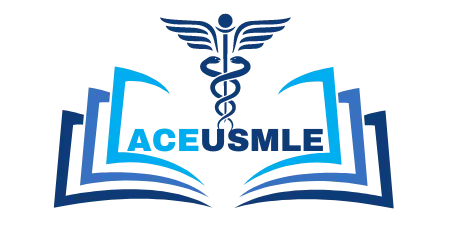Who Takes the USMLE?
1.1 Allopathic vs. Osteopathic Medicine
- Allopathic Medicine: The USMLE primarily caters to students pursuing the Doctor of Medicine (MD) degree.
- Osteopathic Medicine: Students of osteopathic medicine have the option to take either the USMLE or the Comprehensive Osteopathic Medical Licensing Examination (COMEX).
Overview of the Tests
2.1 Step 1
- Step 1 serves as the foundational pillar, emphasizing basic sciences and fundamental principles. Topics range from anatomy to pharmacology, covering essential aspects of medical knowledge.
- This one-day test is typically undertaken at the culmination of the second year of medical school.
2.2 Step 2
- Clinical Knowledge (CK): Step 2 involves a two-day examination, focusing on clinical sciences such as surgery, internal medicine, pediatrics, and obstetrics and gynecology.
- Clinical Skills (CS): The CS component necessitates face-to-face interactions with standardized patients, assessing diagnostic and interpersonal skills.
- Step 2 is commonly scheduled during the fourth year of medical education.
2.3 Step 3
- Acting as the final hurdle before unsupervised medical practice, Step 3 evaluates readiness for independent patient care.
- This two-day examination, typically undertaken after the first year of residency, encompasses both multiple-choice questions and simulated patient care scenarios.
Studying for Success
- Preparing for the USMLE demands dedication and a comprehensive approach.
- Utilize resources such as textbooks, question banks, and review courses to solidify understanding and reinforce clinical reasoning skills.
- Effective time management and structured study plans are paramount for success across all three steps.
Understanding USMLE Scores
- While Step 2 CS is graded on a pass/fail basis, other components yield numerical scores.
- The scoring system employs both three-digit and two-digit scales, with a minimum passing score of 75 on the latter.
- Interpretation of scores is crucial, as they serve as indicators of proficiency and readiness for medical practice.
FAQs: Unlocking Key Insights
1. How should I prepare for Step 1 of the USMLE?
- Step 1 preparation necessitates a deep understanding of basic sciences. Focus on mastering core concepts and their clinical applications through consistent practice and review.
2. What distinguishes Step 2 CK from Step 2 CS?
- Step 2 CK assesses theoretical knowledge of clinical sciences, while Step 2 CS evaluates practical skills through simulated patient encounters.
3. Is residency training essential before taking Step 3?
- While residency experience can enhance preparation for Step 3, it is not mandatory. However, clinical exposure and hands-on practice are invaluable assets.
4. How can I interpret my USMLE scores effectively?
- Understanding the significance of USMLE scores involves recognizing their implications for residency applications and future medical practice. Seek guidance from mentors and advisors to decipher score reports accurately.
5. What role does the USMLE play in medical residency applications?
- USMLE scores serve as critical components of residency applications, influencing program selection and competitiveness. Achieving optimal scores can bolster candidacy and open doors to prestigious residency programs.
Conclusion
The USMLE journey is a rigorous yet rewarding endeavor, marking the transition from medical education to professional practice. By understanding its structure, preparing diligently, and interpreting scores judiciously, aspiring physicians can navigate this pathway with confidence and competence.




